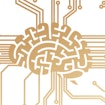
Kevin Bender and Nadav Ahituv aim to determine whether upregulation of the remaining functional allele with CRISPR activation-based techniques can rescue cellular and behavioral deficits observed in Scn2a heterozygous mice. If successful, this approach may be applicable to other haploinsufficient genes associated with autism spectrum disorders.


